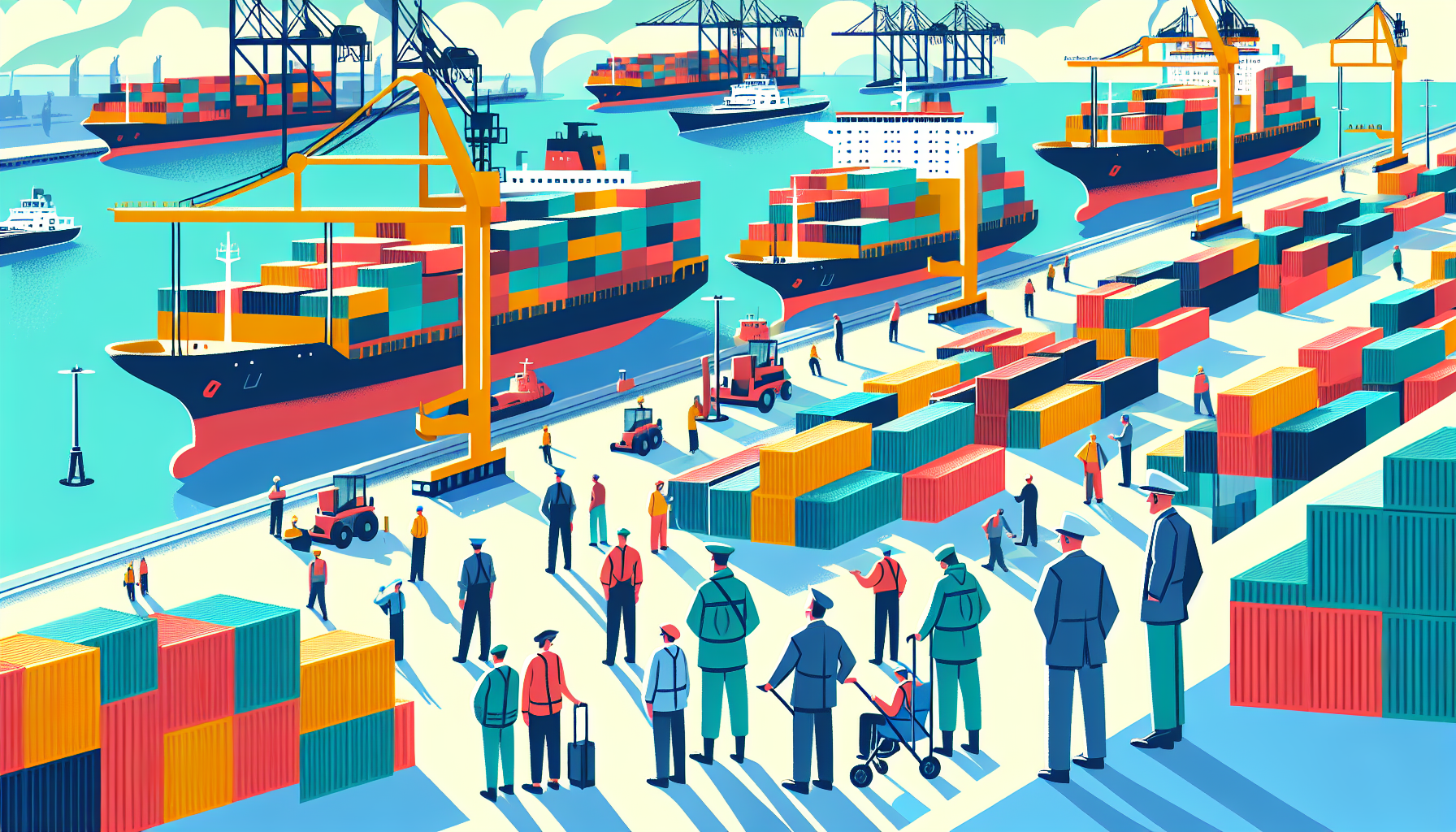Definition
A common-user ocean terminal refers to an ocean terminal that is available for use by more than one military service or agency. It typically includes seaports and associated facilities designed for loading and unloading ships. The operations at these terminals are often directed by the military or by civilian entities under contract with the military.
Key Takeaways
- A Common-user ocean terminal refers to a military facility that is shared by several users and services, this includes both the forces within a single nation and allied or partner nations involved in the operations.
- The main functions of a common-user ocean terminal are to support the receipt, storage, and distribution of cargo, manage port logistics and facilitate the successful completion of military missions.
- These terminals play a crucial role in executing military strategies as they facilitate the rapid and efficient deployment or withdrawal of forces, supporting national and international military objectives.
Importance
The term “Common-user ocean terminal” is significant in military operations as it refers to seaports or facilities that are employed for the handling and transportation of cargo and military units.
These terminals are typically designated for use by multiple authorized users and serve as crucial logistical hubs during both peace and wartime.
They facilitate the efficient flow of goods, equipment, and personnel necessary to carry out military operations.
The strategic utilization of common-user ocean terminals enhances operational flexibility, supports sustainability, and aids in the cost-effective and timely execution of missions.
Furthermore, these shared terminals promote collaboration and integration among different military services, agencies, and sometimes, allied nations.
Explanation
A common-user ocean terminal serves as a multi-purpose installation in military operations, functioning as a key logistical hub for maritime transport of military supplies, personnel, and equipment. It plays a crucial role in strategic and tactical deployment, as this type of terminal is designed for common use by several military services – Army, Navy, Air Force, etc.
These terminals are accessible for all branches of the military to aid in the successful execution of missions without delay or interruption. The main goal of the common-user ocean terminal is to ensure an effective and seamless flow of military resources.
It allows efficient loading, unloading, surface transport, and storage procedures, managing the steady transition of military assets from the home base to overseas locations. Essentially, these terminals connect the strategic home stations with the operational area, helping to bridge the logistical gap.
By functioning as a single, shared point for all military services, it simplifies coordination efforts and streamlines the overall logistical process. In essence, a common-user ocean terminal is a cornerstone of military supply chain dynamics, enabling swift and safe military deployment.
Examples of Common-user ocean terminal
Port of Los Angeles, United States: This port is one of the busiest and most important ports in the United States, handling enormous amount of cargo each year. The U.S military often utilizes this port as a common-user ocean terminal to transport military equipment and personnel domestically and internationally. It acts as a shared resource for not only commercial cargo handling but also for military needs.
Port of Rotterdam, Netherlands: As the largest port in Europe, the Port of Rotterdam provides crucial common-user services for the Dutch military and NATO forces. During military exercises or deployments, the port serves as an essential hub for the movement of military vehicles, equipment, and personnel.
Port of Busan, South Korea: Located strategically close to the military tensions of the Korean peninsula, the Port of Busan operates as a common-user ocean terminal for the South Korean military and the allied forces. It plays a critical role in times of military maneuvers and potential conflicts, handling the transshipment of military cargo.
FAQs about Common-user Ocean Terminal
What is a Common-user Ocean Terminal?
A Common-user Ocean terminal refers to a seaport or harbor facility that is available for use by multiple military, commercial, or recreational users. It’s utilized for the shipment, reception, storage, and distribution of cargo.
Who uses the Common-user Ocean Terminal?
Various entities use the Common-user Ocean Terminal, including commercial operators, military branches, and sometimes the public for recreational activities such as fishing and boating. It allows for a variety of different operations, often related to shipping or maritime activities.
What are the Advantages of a Common-user Ocean Terminal?
A major advantage of the common-user ocean terminal is its flexibility. With multi-user access, it allows the usage of the terminal to different entities thereby maximizing capacity usage, promoting collaboration, and fostering a competitive shipping industry.
What are the Operations at a Common-user Ocean Terminal?
The operations at a common-user ocean terminal typically include loading and unloading of cargo from ships, storage of goods, and distribution of cargo to the final destination. It may also include ancillary services such as cargo inspection, maintenance, repairs, and storage of empty containers.
Related Military Operation Terms
- Port Operation
- Military Sealift
- Cargo Handling
- Logistics Management
- Strategic Seaport
Sources for More Information
- U.S. Transportation Command: This official military command is responsible for global logistics and could provide information about common-user ocean terminals.
- Maritime Administration: This U.S. Department of Transportation agency deals with waterborne transportation and could offer specifics on the subject.
- National Academies Press: It publishes reports of the National Academies of Sciences, Engineering, and Medicine that might include useful research on military logistics.
- RAND Corporation: This non-profit global policy think tank often conducts research and analysis on military strategies, which might include the use of common-user ocean terminals.
 Benefits.com Advisors
Benefits.com Advisors
With expertise spanning local, state, and federal benefit programs, our team is dedicated to guiding individuals towards the perfect program tailored to their unique circumstances.
Rise to the top with Peak Benefits!
Join our Peak Benefits Newsletter for the latest news, resources, and offers on all things government benefits.



















